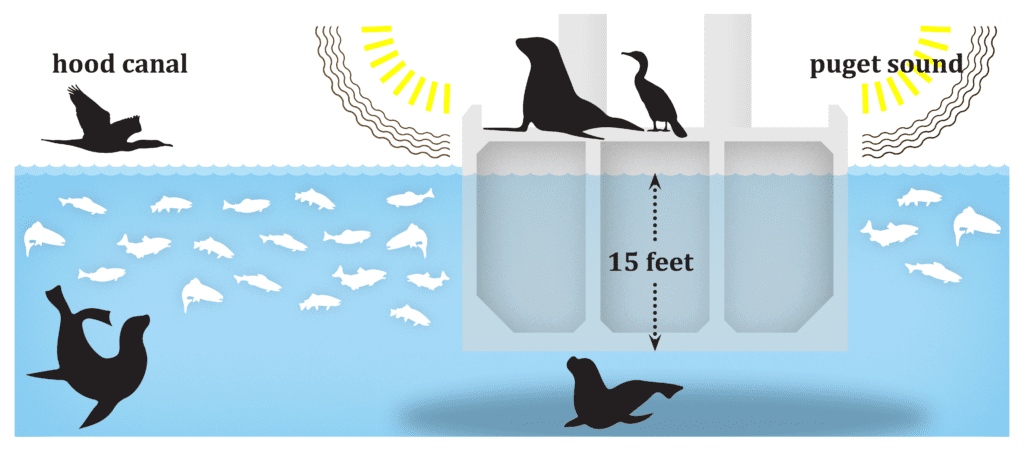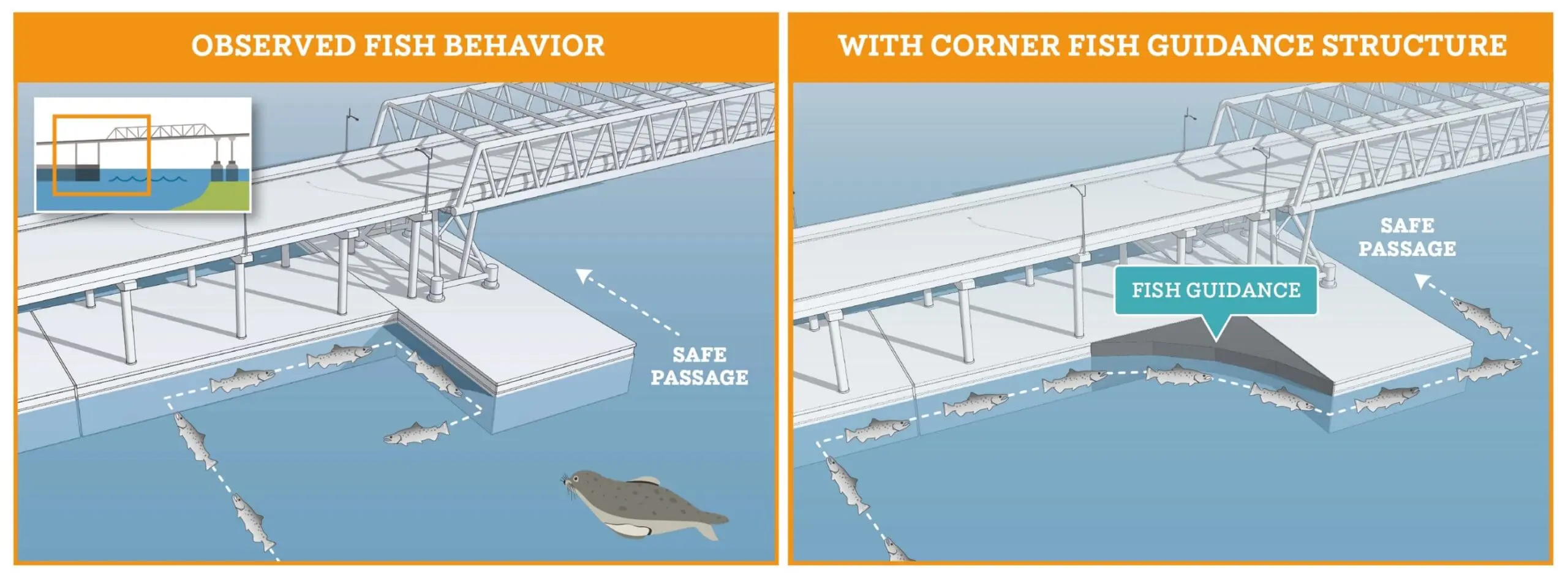How can we protect fish at the Hood Canal Bridge?
Long Live the Kings, in partnership with the Hood Canal Coordinating Council, Tribes, and state and federal agencies, is working to address high steelhead mortality at this floating bridge.
A Bridge Over Troubled Water
Researchers have discovered that the floating Hood Canal Bridge, a vital transportation link between the Olympic and Kitsap Peninsulas, delays the migration of young salmon and steelhead and allows seals to eat them before they can make it out to the ocean.
The Hood Canal Bridge spans the northern outlet of Hood Canal, connecting the Olympic and Kitsap peninsulas. As a floating bridge, its pontoons span 83% of the width of Hood Canal and extend 15 feet down from the water surface.

These pontoons act like a barrier to juvenile steelhead trout, leaving them trapped and vulnerable to predators. Tracking data from Phase 1 of the project indicated that up to 50% of juvenile steelhead that make it to the bridge do not survive past it. Furthermore, certain portions of the bridge appear to collect plankton, encouraging hungry Chinook, chum and forage fish to linger at the bridge, which could increase their susceptibility to predation.
The bridge also impacts temperature, salinity, and currents for miles to either side. This dual threat to fish and their ecosystem may be limiting the effectiveness of millions of dollars already spent recovering steelhead, salmon, and their habitat in Hood Canal.
